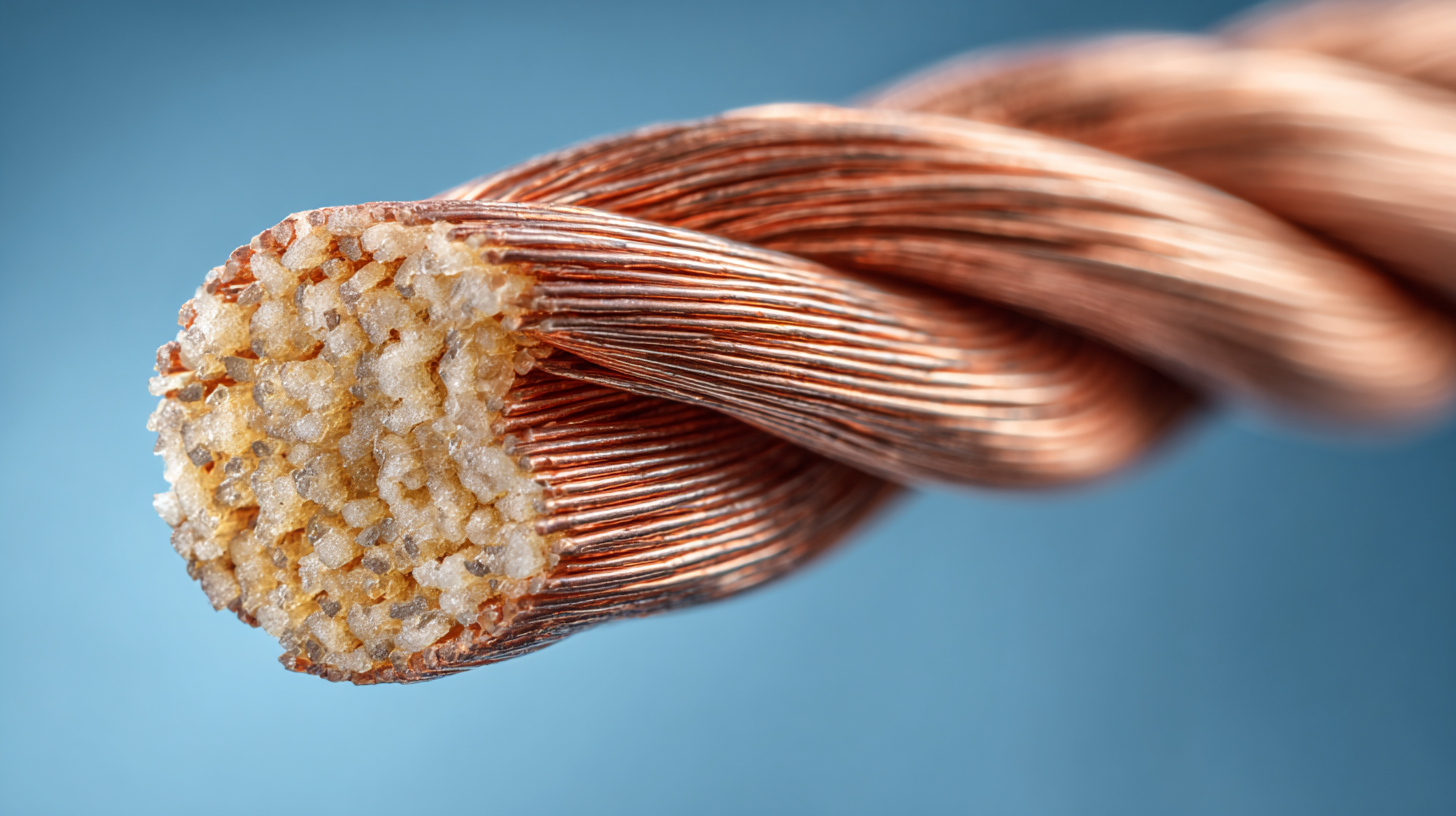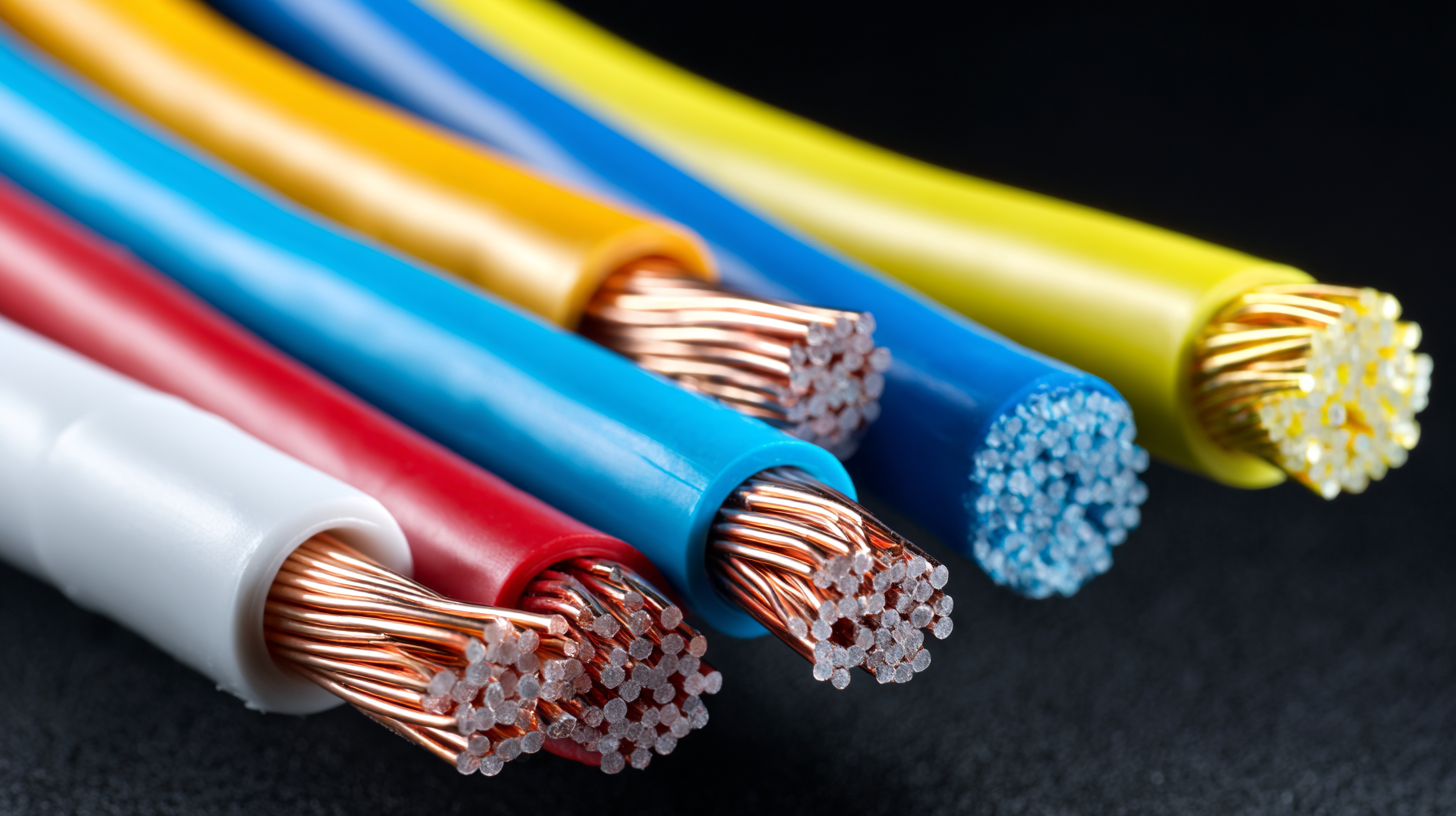In today’s increasingly electrified world, understanding the intricacies of electric wire is crucial for both safety and efficiency in our homes. As per the National Electrical Manufacturers Association (NEMA), approximately 44% of residential fires are attributed to electrical malfunctions, highlighting the importance of adhering to industry safety standards. The proper selection, installation, and maintenance of electric wire not only ensure optimal performance but also contribute to the longevity of electrical systems. With advancements in wiring technologies, consumers are often faced with choices that can significantly impact their energy consumption and safety. This article aims to demystify electric wire, providing essential facts, a comprehensive overview of safety standards, and practical guidance for achieving optimal usage in every home. Understanding these factors is paramount for homeowners looking to enhance their living spaces while ensuring a safe environment for their families.

Electric wires are integral to our daily lives, powering everything from household appliances to complex industrial systems. Understanding the various types of electric wire is essential for optimal usage and safety in every home. Common types include copper and aluminum wires, each with distinct characteristics and applications. Copper wires are favored for their excellent conductivity and durability, making them ideal for residential and commercial electrical systems. On the other hand, aluminum wires are lighter and less expensive, suitable for overhead power lines but necessitating careful handling to prevent potential overheating.
Moreover, the growing emphasis on renewable energy sources has led to advancements in electric wire technology. Wires designed for solar panels, wind turbines, and energy-efficient systems are becoming increasingly important. These specialized wires are engineered to withstand unique environmental conditions and maximize energy transfer, supporting the transition to sustainable practices.
As the demand for renewable energy continues to rise, understanding the types of electric wire and their specific applications will play a crucial role in enhancing the safety and efficiency of modern electrical installations.
When handling and installing electric wires, adhering to crucial safety standards is paramount to prevent accidents and hazards. The rise in electrical fires, as evidenced by a staggering 2,030 incidents caused by short-circuits last year, emphasizes the importance of proper installation and maintenance. Homes should be equipped with the right wiring systems that comply with national safety regulations to minimize risks. Regular inspections and updates to outdated electrical systems can play a significant role in safeguarding against potential dangers.
Moreover, awareness of the installation procedures for household appliances is essential. Incidents involving electric shock from improperly installed devices, such as water heaters, have highlighted the need for homeowners to seek professional help when necessary. Simple practices, like avoiding overloading circuits and ensuring all connections are secure, can significantly reduce the likelihood of electrical fires. By following established safety protocols and regulations, individuals can greatly enhance the safety and reliability of their home electrical systems.
This bar chart illustrates the safety standards compliance levels for various types of electric wires commonly used in residential settings. The categories include Low Voltage, Medium Voltage, and High Voltage, each representing different safety thresholds as defined by industry regulations.
When it comes to ensuring the safety and efficiency of home electrical systems, selecting the appropriate wire gauge is critical. The American Wire Gauge (AWG) system categorizes wire sizes, and understanding this system can significantly impact the performance of household electrical installations. According to the National Electrical Code (NEC), the most commonly used wire gauges for residential wiring range from 14 AWG for lighting circuits to 12 AWG for general-purpose outlets. It is essential to choose the right gauge as lesser gauges (lower numbers) can handle higher current loads. For example, a 12 AWG wire can safely carry up to 20 amps, making it suitable for most appliances.
Additionally, factors such as the length of the wire run and the type of circuit also play a role in gauge selection. For longer runs, voltage drop becomes a concern; the NEC recommends reducing wire sizes in these cases to maintain efficiency and safety. A study from the Electric Power Research Institute (EPRI) noted that up to 5% of energy loss can occur in poorly sized wires over long distances. Therefore, evaluating both current demands and run lengths is essential for optimal wire gauge selection, ultimately promoting a safer and more energy-efficient home environment.

When using electric wire in your home, avoiding common mistakes is crucial for both safety and efficiency. One significant error is using inappropriate wire gauges for specific applications. According to the National Electrical Code (NEC), using a wire gauge too small for the current can lead to overheating and potential fire hazards. For instance, a typical 15-amp circuit requires a minimum of 14-gauge wire, while a 20-amp circuit demands at least a 12-gauge wire. Failure to adhere to these specifications can result in damaged insulation and increased risk of electrical failures.
Another common mistake is neglecting to account for the voltage drop over long distances. The American Wire Gauge (AWG) standard recommends that voltage drop should not exceed 3% for branch circuits. When wiring long runs, using wire that is too small can cause insufficient power delivery to appliances, leading to inefficiencies or equipment damage. Additionally, improper connections, such as inadequate wire stripping or loose terminals, can contribute to arcing and overheating concerns. Always follow best practices and manufacturer guidelines to ensure safe and effective wiring in your home.

Maintaining and inspecting electric wires in your home is crucial for ensuring safety and efficiency. Regular checks can help identify potential issues such as frayed insulation, loose connections, or signs of wear that could lead to electrical hazards. Homeowners should schedule inspections at least once a year and immediately after any severe weather event. During these inspections, look for discoloration around outlets, flickering lights, or the smell of burning, which can indicate a problem that requires professional attention.
Additionally, understanding the best practices for wire maintenance can extend the lifespan of your electrical system. Keep wires away from heat sources and moisture, and ensure they are not pinched or overly stretched. Using cable management solutions can help organize and protect wires from damage. As technology evolves, like the introduction of smart devices and automated systems, maintaining a safe and effective wiring infrastructure becomes even more important in homes. Proper wire care allows for seamless integration of new technologies while preventing potential risks.
| Dimension | Details |
|---|---|
| Wire Gauge | Common gauges: 14, 12, 10 for residential wiring |
| Voltage Rating | Typically 120/240V in standard homes |
| Material | Copper and aluminum are the most common materials |
| Safety Standards | Must meet NEC (National Electrical Code) standards |
| Insulation Type | Thermoplastic (PVC) and rubber insulations are common |
| Inspection Frequency | At least once every 3-5 years |
| Common Issues | Fraying, corrosion, overheating, and loose connections |
| Maintenance Tips | Keep wires dry, organized, and free from obstructions |






